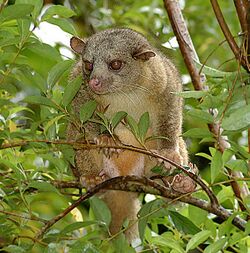| Display title | Biology:Northern olingo |
| Default sort key | Northern olingo |
| Page length (in bytes) | 9,101 |
| Namespace ID | 3026 |
| Namespace | Biology |
| Page ID | 318609 |
| Page content language | en - English |
| Page content model | wikitext |
| Indexing by robots | Allowed |
| Number of redirects to this page | 0 |
| Counted as a content page | Yes |
| Page image |  |
| HandWiki item ID | None |
| Edit | Allow all users (infinite) |
| Move | Allow all users (infinite) |
| Page creator | imported>TextAI |
| Date of page creation | 01:53, 11 February 2024 |
| Latest editor | imported>TextAI |
| Date of latest edit | 01:53, 11 February 2024 |
| Total number of edits | 1 |
| Recent number of edits (within past 90 days) | 0 |
| Recent number of distinct authors | 0 |
Description | Content |
Article description: (description)
This attribute controls the content of the description and og:description elements. | The northern olingo (Bassaricyon gabbii), also known as the bushy-tailed olingo or, simply, the olingo (due to it being the most common of the species), is an arboreal (tree-dwelling) member of the raccoon family, Procyonidae, which also includes the coatimundis and kinkajou. Native to Central America... |

